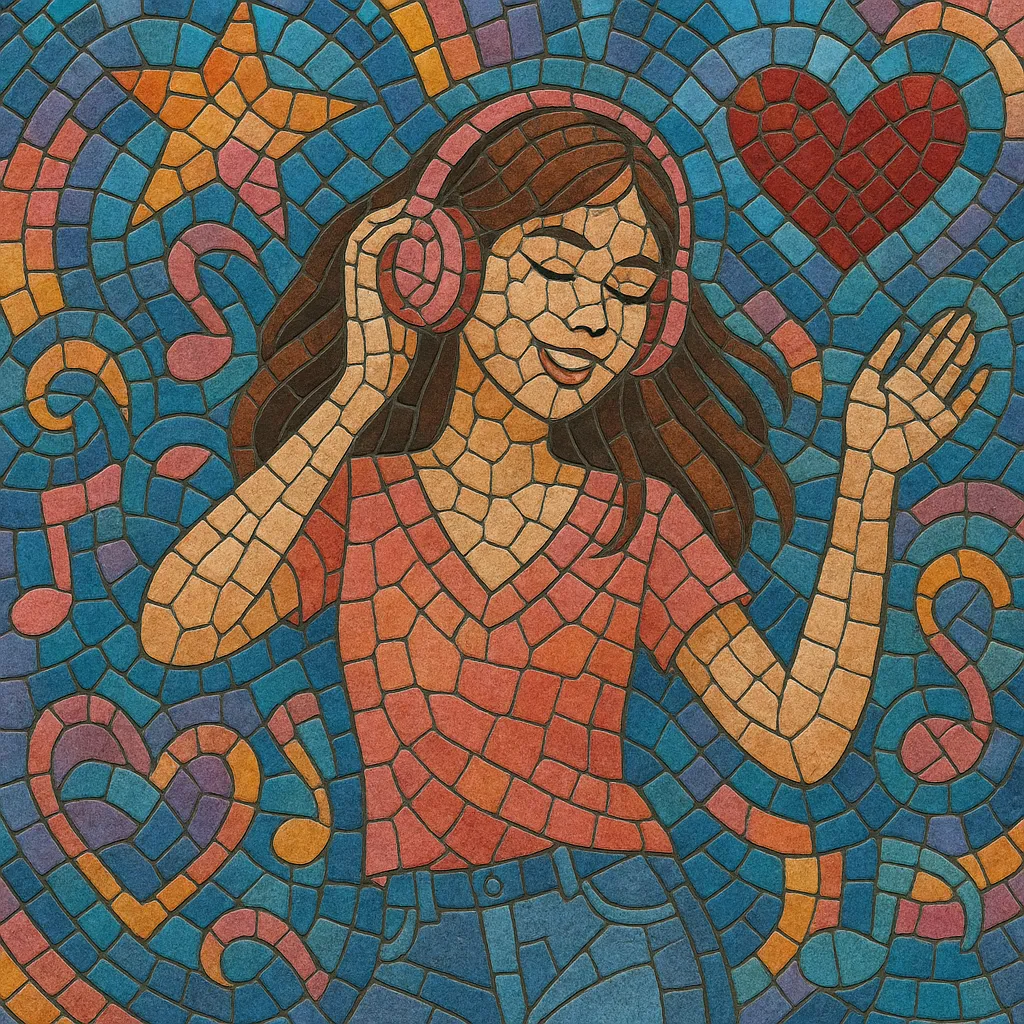Teen pop is mainstream pop music tailored primarily to adolescent audiences, emphasizing catchy melodies, simple and relatable lyrics, and a polished, radio-ready sound.
Sonically, it blends elements of dance-pop, R&B, bubblegum pop, and pop rock: bright synths or clean guitars, steady danceable beats, stacked vocal harmonies, and memorable hooks designed for quick recall. Lyrical themes center on first love, friendship, self-expression, school life, and empowerment, usually expressed in upbeat, optimistic terms. Visual presentation and choreography often play a large role, with acts marketed as relatable idols—frequently in the form of boy bands or girl groups.
Arrangements commonly use verse–pre-chorus–chorus forms, key changes in the final chorus, and concise runtimes. The result is accessible, hook-driven pop that connects quickly with listeners and translates well to television, music video, and social media formats.
Teen pop’s roots lie in the postwar “teen idol” boom of the late 1950s, when artists such as Paul Anka and Frankie Avalon were marketed to a rapidly growing youth audience. In the early 1960s, girl groups and Motown’s hit machine refined a template of concise, hook-packed songs with universal themes of young love and friendship. Bubblegum pop in the late 1960s translated that appeal into even simpler, brighter, and highly marketable singles.
The 1970s and 1980s saw teen-focused stars and family groups (e.g., The Osmonds, the Jackson 5) and later solo teen idols (like Tiffany and Debbie Gibson). New Edition and other vocal groups blended R&B and pop with choreography, setting the stage for modern boy-band aesthetics. Production became increasingly polished and visual presentation more central, aided by music television.
Teen pop exploded worldwide in the late 1990s and early 2000s through acts like Backstreet Boys, *NSYNC, Britney Spears, and Christina Aguilera. Swedish producers at Cheiron Studios (including Max Martin) defined a high-impact, dance-pop sound with enormous choruses and precision hooks. MTV’s Total Request Live (TRL) and an ecosystem of magazines, tours, and merchandise cemented teen pop as a dominant cultural force.
In the 2010s, teen pop absorbed electropop, trap, and contemporary R&B textures while discovering audiences via Disney/Nickelodeon pipelines and social media. Artists leveraged YouTube and later TikTok for direct fan engagement, while global scenes—especially K-pop—scaled the teen pop model internationally with rigorous training systems and multimedia concepts. In the 2020s, teen pop continues to intersect with pop-punk revivals and viral short-form platforms, keeping its emphasis on hooks, personality, and instantly communicable stories.


